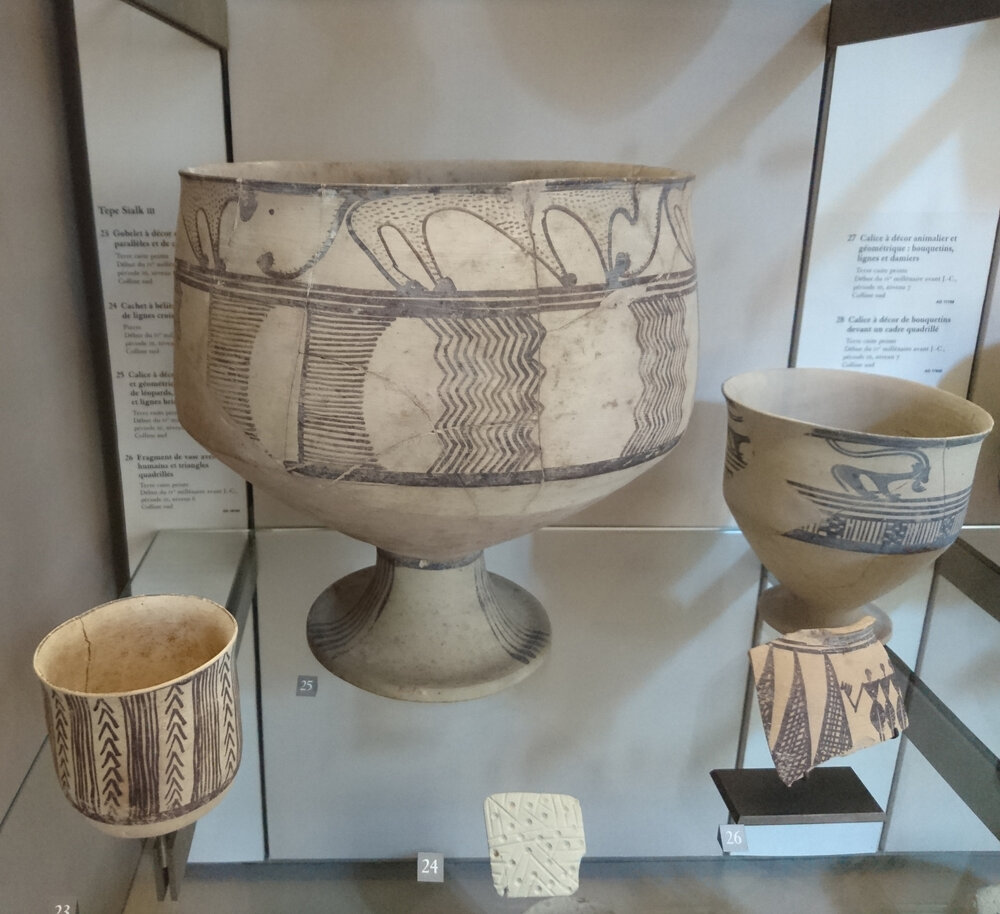Louvre considers joint exhibit of Sialk objects, documents

TEHRAN – The Louvre and Sialk archaeological consider holding a joint exhibit on French excavations at the prehistorical settlement which is situated in the heart of Iran.
“The Louvre and Sialk archaeological site were supposed to hold an exhibition to feature both magnificent objects discovered at the site and manuscripts of [the renowned French archaeologist] Roman Ghirshman,” ILNA quoted Sialk’s director as saying on
However, the exhibit was postponed to a later time due to the coronavirus pandemic, Javad Hosseinzadeh said.
The relics were unearthed during several excavation projects at the site, which is one of the oldest and richest archaeological sites in central Iran, mostly by Ghirshman during the 1930s.
“About 800 objects from Tepe Sialk are being kept in the Louvre museum… There are also similar objects being kept in the homeland,” the official said.
“Therefore, we hope to hold this exhibition next year, concurrent with the 91st anniversary of the discovery of Sialk.”
Because it is not possible to enter and exit museum objects at the moment [due to COVID restrictions], this exhibition may be held virtually, he explained.
Situated halfway between Kashan and Fin in Isfahan province, Tapeh Sialk has yielded interesting pottery pieces, metal tools, and domestic implements made from stone, clay, and bone that date from as early as the 4th millennium BC.
Excavation projects at the site began in 1933 by a Louvre delegation led by Ghirshman… capping with a most recent project in 2009, which was led by Hassan Fazeli-Nashli, a faculty member of the Archaeology Department, University of Tehran.
According to the Louvre, the oldest levels document the occupation of the Iranian plateau from the Neolithic to the Chalcolithic over more than two millennia. Then, around 3000 BC, the site is integrated into the vast cultural area called Proto-Elamite during which specific writing appears.
Much later, in the Iron Age, the local culture, represented by beautifully painted pottery, is best known through the excavation of necropolises. This culture, which appeared new in the region, has long been identified with the Medes and fueled the debate over the arrival of new populations speaking Iranian languages from which comes modern Persian.
Many travellers opt to pass Kashan on their journeys between Tehran, Isfahan, Shiraz, and Yazd, because this delightful oasis city on the edge of the Dasht-e Kavir, is one of Iran’s most alluring destinations. Kashan not only boasts a cluster of architectural wonders, an atmospheric-covered bazaar, and a UNESCO-recognized garden, but it also offers some of central Iran’s best traditional hotels.
AFM

Leave a Comment